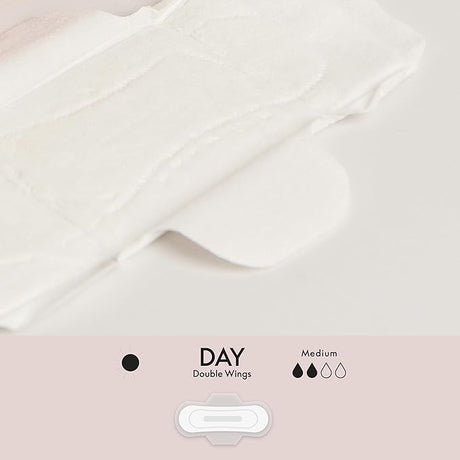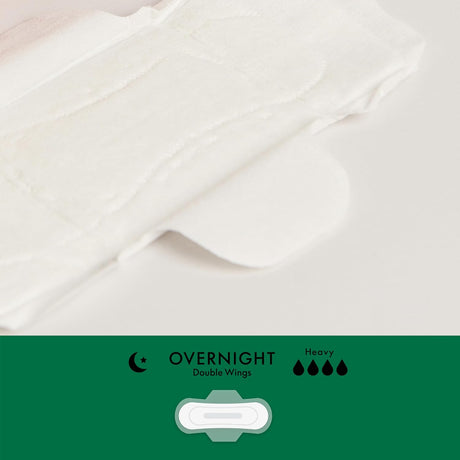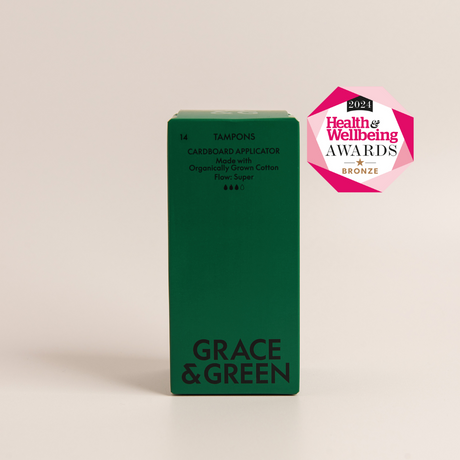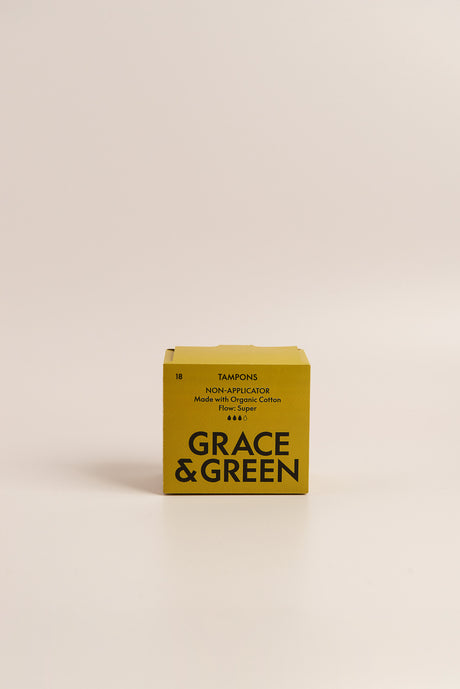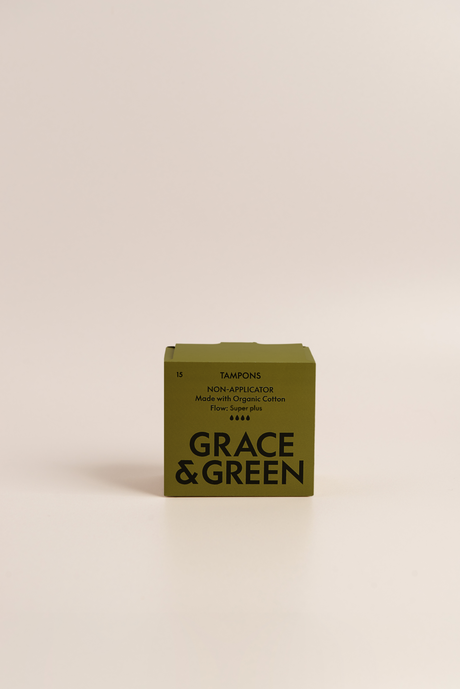What Is Vaginal Discharge?
Vaginal discharge is your body’s natural way of keeping the vagina clean, balanced, and protected. Made up of fluid and cells from the vaginal walls, this everyday occurrence plays a vital role in reproductive health.
Understanding the Purpose of Vaginal Discharge
Discharge isn’t just a by-product - it’s your body’s built-in cleanser. It:
- Clears out old cells and bacteria
- Keeps the vaginal area moist and healthy
- Helps prevent infections
- Signals different stages of your menstrual cycle
What’s Considered Normal Vaginal Discharge?
‘Normal’ looks different from person to person - but typically, discharge is clear or whitish, has a mild scent, and varies in texture depending on your hormonal cycle.
How Hormones Influence Discharge Colour
Oestrogen and progesterone fluctuate throughout your cycle, affecting the amount, texture, and colour of your discharge.
Tracking Discharge Throughout Your Cycle
Your vaginal discharge naturally changes throughout the menstrual cycle due to hormonal shifts - especially oestrogen and progesterone. Understanding these patterns can help you spot what’s normal for you and recognise when something’s off. Typically you might notice the following pattern across your cycle:
-
Menstrual Phase (Days 1–5): Discharge is minimal or absent as menstrual bleeding occurs. You may notice some light brown spotting toward the end as older blood clears from the uterus.
-
Follicular Phase (Days 6–12): Discharge becomes clearer and more watery as oestrogen rises. It's often thin and slightly sticky—signalling your body preparing for ovulation.
-
Ovulation Phase (Days 13–15): Discharge is at its peak volume, appearing clear, stretchy, and slippery—like raw egg white. This fertile-quality mucus supports sperm movement.
-
Luteal Phase (Days 16–28): Discharge thickens and becomes creamy or cloudy white due to increased progesterone. It may gradually reduce in volume before your next period.
Tracking these changes over time can help you better understand your unique cycle.
Clear or White Discharge: Healthy Signs
Clear or white discharge is a positive sign. It reflects a balanced vaginal environment.
Clear Discharge During Ovulation
Often thin and stretchy, clear discharge typically appears mid-cycle and indicates ovulation - a sign of peak fertility.
Thick White Discharge: Normal or Not?
Thicker white discharge is often perfectly normal, especially before your period. However, if it looks more like cottage cheese and is accompanied by itching or a strong odour, it may be worth getting checked.
Odour and Texture: What Else to Look For
Pay attention to any unusual odours or a cottage cheese-like texture - these may suggest thrush or other infections.
Yellow Discharge: When to Pay Attention
Yellow discharge can be entirely harmless. The key is to observe texture, odour, and accompanying symptoms:
- Pale yellow: often normal
- Bright or dark yellow: could suggest an infection
-
Thick yellow discharge: especially with itching or odour, needs checking
Trust your instincts - if something feels off, speak to a healthcare professional.
Green or Yellow-Green Discharge: Possible Infections
If your discharge appears green or yellow-green, it could point to a bacterial or sexually transmitted infection (STI).
Causes of Yellow or Green Discharge
- Trichomoniasis: can cause frothy green discharge with a noticeable smell
-
Bacterial vaginosis (BV) or other infections may also lead to yellow-green fluid
If you are experiencing this, you should seek medical support for proper diagnosis and treatment.
Brown Discharge: Period or Something Else?
Brown discharge often occurs when old blood exits the body - usually harmless, but timing is key.
Brown Discharge Before or After Your Period
-
Before your period: may be light spotting
-
After: often your body’s way of clearing out remaining blood
Persistent brown discharge, especially mid-cycle, may signal hormone imbalances, fibroids, or even polyps. If unsure, consult your GP.
Pink Discharge: Ovulation or Spotting?
Pink discharge is often linked to ovulation, light spotting, or hormonal shifts. It can also appear after sex due to minor cervical irritation.
Is Pink Discharge a Cause for Concern?
Occasional pink discharge is usually benign. However, if it's frequent or accompanied by other symptoms (like pain or an odour), speak to your healthcare provider.
Grey Discharge: A Sign of BV
Grey discharge is a hallmark sign of bacterial vaginosis, especially when paired with a strong, fishy odour.
BV and Other Conditions That Cause Grey Discharge
Alongside grey discharge, symptoms might include:
- Burning or irritation
- Itching
-
Discomfort during sex
Your GP may prescribe antibiotics or recommend rebalancing treatments like probiotics.
Orange Discharge: Rare but Possible
Orange discharge is uncommon but can occur. It may simply be due to old blood mixing with cervical mucus - or a sign of infection.
Orange Discharge: Linked to Cervical Infections
Potential causes include:
- Cervicitis (cervical inflammation)
- Trichomoniasis, an STI
- Minor bleeding mixing with discharge at the start of a period
Track symptoms carefully and reach out to your healthcare provider if you’re unsure.
When Should You See a Doctor About Discharge?
While many changes in discharge are normal, some symptoms are worth checking with a doctor.
- Sudden change in colour, smell, or consistency
- Pain or discomfort
-
Itching, burning, or swelling
When Colour Change Isn’t Normal
Bright yellow, green, grey, or orange discharge - especially with odour - can signal infection or imbalance.
What to Tell Your Doctor About Discharge
Bring helpful information to your appointment:
- When it started and any patterns you’ve noticed
- Colour, smell, and texture changes
-
Any related symptoms (pain, bleeding, itching)
This gives your GP a clearer picture to support your care.
How to Maintain Vaginal Health Every Day
Small steps can make a big difference in preventing abnormal discharge.
-
Wear breathable underwear made of materials like cotton
-
Only wash your vagina with water avoiding any soaps, scented products or vaginal douching
-
Stay hydrated and eat a balanced diet
-
Wipe front to back to avoid bacteria transfer
-
Prioritise rest and stress management
Tips for Preventing Abnormal Discharge
-
Opt for organic period products and change them regularly - we recommend every 4-6 hours at least
-
Only use water to wash your vagina, there is no need for any fragrances or soaps
-
Practise safe sex and get regular STI screenings
-
Incorporate probiotics (through diet or via supplements)
Understanding Your Body
From clear discharge during ovulation to brown spotting post-period, this guide is your starting point for deeper awareness and informed self-care.
If something feels different - like a new colour of vaginal discharge or an unexpected odour - it’s always okay to ask questions. Whether through your GP or a trusted clinic, support is here.
At Grace & Green, we believe in body literacy. Because when you know what’s normal for you, you can feel confident in every cycle, every day.






